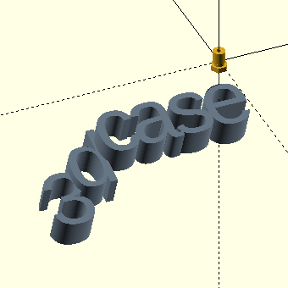Welcome to the Onshape forum! Ask questions and join in the discussions about everything Onshape.
First time visiting? Here are some places to start:- Looking for a certain topic? Check out the categories filter or use Search (upper right).
- Need support? Ask a question to our Community Support category.
- Please submit support tickets for bugs but you can request improvements in the Product Feedback category.
- Be respectful, on topic and if you see a problem, Flag it.
If you would like to contact our Community Manager personally, feel free to send a private message or an email.
How to apply and deal with versions correctly?
 kees_bijker
Member Posts: 170 ✭✭
kees_bijker
Member Posts: 170 ✭✭
I am trying to be able to revert to a correct stage in my modelling, in case it goes wrong. Till now I have had trouble doing this and my models became broken after wrong actions. I did try to use versions but it never resulted in a useful situation. Something always remained broken or unworkable.
So this time I made a version just before I start attempting something difficult. I named it descriptively what I will start there. The main remains active so questions are:
Do I continue in main with my attempt or should I do it in the version?
How to act when it goes wrong? delete the version and revert to main or make the version my main and delete the old main?
Some insight would be highly appreciated here.
Kees
Best Answer
-
 jelte_steur_info
Member Posts: 587 PRO
jelte_steur_info
Member Posts: 587 PRO
yes exactly Kees. If i know upfront i'll be weighing my options later, I'll branch because its neater in naming etc to see them in parralel.
If I just paint myself into a corner, i'll version it just in case, revert to an older working version and try again so i'll get multiple successive versions in the main for different attempts. (for single part studio work that is)
1
Answers
In main. The version can be restored to main if the problem continues. You can also start a branch to work out the problem then merge into main when you're satisfied.
Don't forget undo if there has only been one step tp make the error.
Don't be afraid of versions, make versions when you reach a point in your design, that you think you might return to. You don't need to overdo this, but a few versions and/or branches along the way isn't a bad idea. If you are sure about your design, maybe you don't need them - but they don't hurt anything. And I like to name the milestone points, so I can easily find them later.
Be aware when working with parts that are located outside the current document - if you edit these parts, you will need to make a version, and then update the current document in order to see the changes. This process can add a surprising amount of versions to a part before you get it right - but I haven't had any trouble with them (some of my library parts have hundreds of versions).
Just my own personal observations, Good luck
I usually end up with at least one version per day of CAD work.
Simon Gatrall | Product Development Specialist | Open For Work
Hi S1mon,
would you please explain to me how you approach this? You make a version when exactly and with which thought? At what stage of design do you feel it is needed? Do you continue with the Main after the version creation? or do you switch to the version to make your trial?
When you decided it was not right, what do you do exactly?
Thank you kindly for this, it will help a lot.
Kees
S1monJan 5, 2025
@kees_bijker : versions cost nothing (unlike in legacy cad where it takes space on your disk to have multiple versions), so better to make many andn not use them than have then too few...
in the CAD modeling process, you have certain accomplished states, like: "the basic shape is there, now add details" or "so far this is easy modeling, the next step i'm not sure how it'll work out" or "first 3d printable prototype" or "this part of the design i knew, now I'm going to explore this bit". each of these could warrant a version…
if you already know you're exploring multiple parralel options for a solution, use branches instead.
Thanks Jelte_steur814, So I take it you continue working in main and the versions are only to fall back on, like an insurance. While if you know you will need to try several different things along side eachother as experiments, you use a branch and later you decide which will be your successful branch and you make that your main?
Do I see that correctly?
yes exactly Kees. If i know upfront i'll be weighing my options later, I'll branch because its neater in naming etc to see them in parralel.
If I just paint myself into a corner, i'll version it just in case, revert to an older working version and try again so i'll get multiple successive versions in the main for different attempts. (for single part studio work that is)